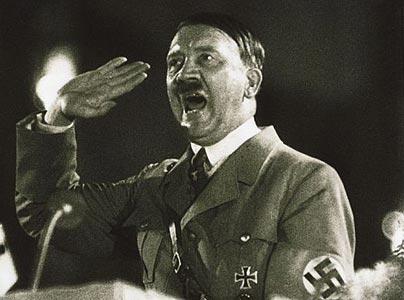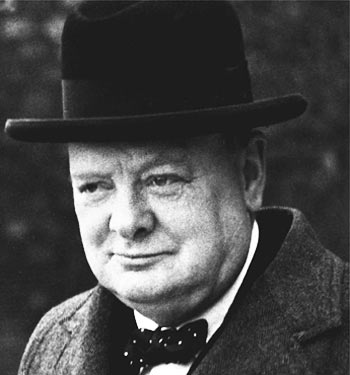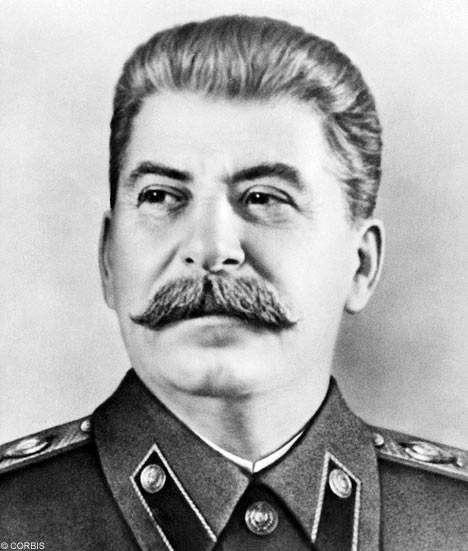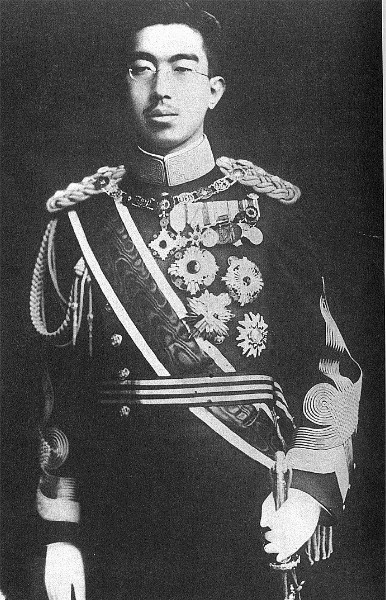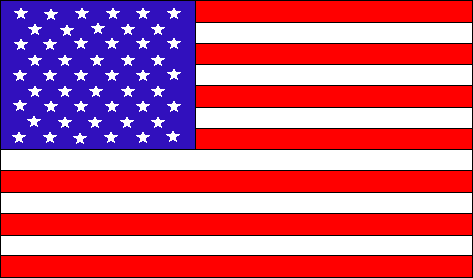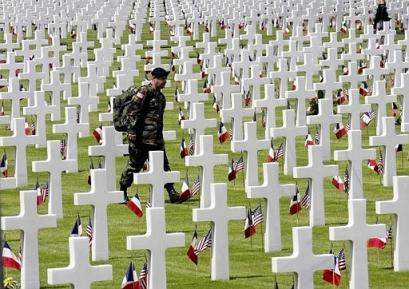The Second World War Questions! Trivia
(41).jpg)
.
- 1.
Which alliance did Germany belong to?
- A.
The Allies
- B.
The Axis Powers
Correct Answer
B. The Axis PowersExplanation
Germany belonged to the Axis Powers during World War II. The Axis Powers were a military alliance formed by Germany, Italy, and Japan. They fought against the Allies, which included countries such as the United States, United Kingdom, and Soviet Union. The Axis Powers aimed to expand their territories and promote their own ideologies, while the Allies sought to defeat them and restore peace. Germany's membership in the Axis Powers was a key factor in the outbreak and escalation of the war.Rate this question:
-
- 2.
Who is this?
Correct Answer
Churchill
Winston ChurchillExplanation
The image depicts Winston Churchill, a prominent figure in British and world history. He served as the Prime Minister of the United Kingdom during World War II, leading the country through its darkest hour. His leadership and powerful speeches inspired the British people and rallied the Allied forces to victory against Nazi Germany. Churchill is also renowned for his writings and is considered one of the greatest wartime leaders of the 20th century.Rate this question:
- 3.
Which country were Josef Stalin a leader for?
Correct Answer
the Soviet Union
Soviet Union
SovietExplanation
Josef Stalin was a leader for the Soviet Union. The Soviet Union was a communist state that existed from 1922 to 1991, and Stalin served as its leader from the mid-1920s until his death in 1953. The term "Soviet Union" refers specifically to the country that Stalin led, while "Soviet" is an abbreviation commonly used to refer to the Soviet Union.Rate this question:
- 4.
Who is this?
Correct Answer
HirohitoExplanation
Emperor Hirohito ruled Japan from 1926 to 1989, leading the country through World War II. Under his reign, Japan joined the Axis Powers and expanded militarily. After Japan’s surrender in 1945, he remained emperor but with reduced political power, as Japan adopted a democratic constitution. His reign saw Japan's transformation from a wartime empire to a modern economic powerhouse.Rate this question:
- 5.
Which countries made a secret treaty?
- A.
Germany and France
- B.
Germany and Great Britain
- C.
Germany and the Soviet Union
- D.
Germany and USA
Correct Answer
C. Germany and the Soviet UnionExplanation
During World War II, Germany and the Soviet Union made a secret treaty known as the Molotov-Ribbentrop Pact. This non-aggression pact was signed in 1939 and allowed both countries to divide Eastern Europe into spheres of influence. The treaty also included a secret protocol that outlined the division of Poland between the two countries. This agreement allowed Germany to focus on its western front and gave the Soviet Union time to prepare for the war. However, the pact was short-lived as Germany eventually broke the treaty and invaded the Soviet Union in 1941.Rate this question:
-
- 6.
Which event started the war?
- A.
The invasion of Austria
- B.
The invasion of Czechoslovakia
- C.
The invasion of Poland
- D.
The invasion of France
Correct Answer
C. The invasion of PolandExplanation
The invasion of Poland is the correct answer because it marked the beginning of World War II. On September 1, 1939, Germany launched a full-scale invasion of Poland, which prompted France and the United Kingdom to declare war on Germany. This invasion violated international agreements and demonstrated Germany's aggressive expansionist policies, leading to a global conflict that lasted for six years and resulted in the loss of millions of lives.Rate this question:
-
- 7.
What happened to many Jewish people in Poland?
- A.
They were sent out of the country.
- B.
They were sent to a ghetto in Warsaw.
- C.
Nothing happened to them.
Correct Answer
B. They were sent to a ghetto in Warsaw.Explanation
During World War II, many Jewish people in Poland were forced into ghettos, including the Warsaw Ghetto. These ghettos were overcrowded, with poor living conditions and limited resources. Later, most were deported to concentration and extermination camps like Auschwitz, where they faced forced labor and mass killings. The Holocaust resulted in the deaths of millions of Jews, with Poland’s Jewish population suffering immense losses.Rate this question:
-
- 8.
What is the difference between an extermination camp and a concentration camp?
- A.
Extermination camps are where they were killed in gas chambers when they arrived, but in concentration camps, some had to do slave work.
- B.
Only jewish came to extermination camps while other groups of people went to concentration camps.
- C.
In extermination camps prisoners were send to work while in concentration camps they only waited to die.
Correct Answer
A. Extermination camps are where they were killed in gas chambers when they arrived, but in concentration camps, some had to do slave work.Explanation
Extermination camps and concentration camps were both types of camps used during the Holocaust, but they served different purposes. Extermination camps were specifically designed for mass murder, where victims, primarily Jews, were sent to gas chambers upon arrival to be killed. On the other hand, concentration camps were primarily labor and detention camps, where prisoners were subjected to harsh conditions, forced labor, and often faced death due to starvation, disease, or mistreatment. While some prisoners in concentration camps were forced to work as slaves, the main purpose of extermination camps was the systematic extermination of individuals.Rate this question:
-
- 9.
When did USA join the war?
- A.
Right before the end in 1945.
- B.
After Germany invaded Poland 1939.
- C.
After the Japanese attack on Pearl Harbour 1941.
Correct Answer
C. After the Japanese attack on Pearl Harbour 1941.Explanation
The correct answer is "After the Japanese attack on Pearl Harbour 1941." This is because the United States entered World War II after the Japanese attacked the American naval base at Pearl Harbor in Hawaii on December 7, 1941. This event led to the United States declaring war on Japan and subsequently joining the war effort against the Axis powers.Rate this question:
-
- 10.
When did Germany break the secret treaty with the Soviet Union?
- A.
In 1939 when the Soviet Union invaded Finland.
- B.
In 1941 when Germany invaded the Soviet Union in Operation Barbarossa.
Correct Answer
B. In 1941 when Germany invaded the Soviet Union in Operation Barbarossa.Explanation
Germany broke its secret treaty with the Soviet Union on June 22, 1941, by launching Operation Barbarossa, the largest military invasion of World War II. This surprise attack ended their non-aggression pact and forced the Soviet Union to join the Allies. The invasion led to a brutal conflict on the Eastern Front, with significant casualties and a turning point in the war.Rate this question:
-
- 11.
Did France and Great Britain become invaded?
- A.
Both of them.
- B.
Only Great Britain.
- C.
Only France.
- D.
None of them.
Correct Answer
C. Only France.Explanation
During World War II, France was invaded by Germany in 1940. The German forces quickly overpowered the French military, leading to the occupation of France for the majority of the war. On the other hand, Great Britain was not invaded by Germany. Despite the intense bombing campaigns during the Battle of Britain, the British successfully defended their country and prevented a German invasion. Therefore, the correct answer is "Only France."Rate this question:
-
- 12.
What happened to many German cities?
- A.
They were untouched.
- B.
They got bombed.
Correct Answer
B. They got bombed.Explanation
During World War II, many German cities were heavily targeted and bombed by Allied forces. This was part of the strategic bombing campaign aimed at weakening Germany's infrastructure and demoralizing its population. The bombings caused widespread destruction, resulting in the loss of lives, homes, and cultural heritage. The impact of these bombings was significant and had long-lasting effects on the cities and their inhabitants.Rate this question:
-
- 13.
When did British and American soldiers land on the coast of Normandy and what's the event called?
- A.
In 1943, the G-day.
- B.
In 1944, the D-day.
- C.
In 1945, the E-day.
Correct Answer
B. In 1944, the D-day.Explanation
In 1944, British and American soldiers landed on the coast of Normandy in an event called the D-day. This was a significant military operation during World War II, marking the beginning of the Allied invasion of German-occupied Western Europe. The D-day invasion played a crucial role in the eventual liberation of Europe from Nazi control.Rate this question:
-
- 14.
When did the war end?
- A.
In 1945 after the Atom bomb over Hiroshima and Nagasaki.
- B.
When Hitler committed suicide.
Correct Answer
A. In 1945 after the Atom bomb over Hiroshima and Nagasaki.Explanation
The war ended in 1945 after the Atom bomb was dropped over Hiroshima and Nagasaki. This event, known as the bombings of Hiroshima and Nagasaki, played a significant role in the conclusion of World War II. The devastation caused by the atomic bombs led to Japan's surrender, ultimately bringing an end to the war.Rate this question:
-
- 15.
Where is this picture taken?
Correct Answer
NormandyExplanation
The picture is taken in Normandy, specifically at the Normandy American Cemetery and Memorial. This cemetery honors American soldiers who lost their lives during the D-Day invasion and subsequent battles in World War II. Located in Colleville-sur-Mer, France, it overlooks Omaha Beach, one of the key landing sites of the invasion on June 6, 1944. The white crosses symbolize the sacrifices made for liberation.Rate this question:
Quiz Review Timeline +
Our quizzes are rigorously reviewed, monitored and continuously updated by our expert board to maintain accuracy, relevance, and timeliness.
-
Current Version
-
Nov 16, 2023Quiz Edited by
ProProfs Editorial Team -
Sep 22, 2010Quiz Created by
Helenaaa
 Back to top
Back to top



